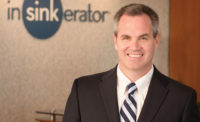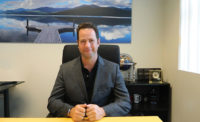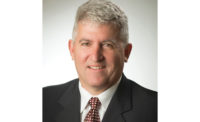Recently, pme talked with Duravit USA President Tim Schroeder on water-conservation and bathroom trends. Schroeder founded Duravit’s U.S. division in 1996 with four employees in Atlanta. The company now has 40 employees around the country, including Duravit NYC, the company’s first stand-alone showroom in the United States.
Schroeder, who has a Bachelor of Fine Arts degree from the Art Institute and a Master of Arts degree from the University of Illinois-Chicago, is passionate about art and design.
pme:Recent research suggests that consumers today have a more practical attitude toward green products. How can plumbing engineers benefit from this change?
TS:More technology is behind the engineering and development of green products. With that comes a higher value proposition to end users and their lifestyle but also to the cost of the goods. And so the benefit to the trade is that it’s an up-sell opportunity.
Do you benefit from having a green product? How does that make you feel? How does that make you behave? How does it impact your lifestyle? It’s not a one-for-one transition. The consumer wants the latest, most-efficient, highest-value products. They’re typically not at the commoditized low-end part of the market; they’re more at mid-level or even up to luxury. So it’s an up-sell opportunity from my perspective.
pme:What is Duravit’s position on California’s new water-conservation standards? And does the company have products that meet the California Energy Commission standards?
TS:We do have products that meet the CEC standards and we’ll continue to develop more. For us, the evolution of this discussion is very important. In the 1960s, one of the critical epicenters of the green movement in Europe was based in Germany’s Black Forest, the home of Duravit. So culturally it’s part of who we are. It’s part of how we think. From our perspective, of course we’re trying to engineer the product to be better for the environment — through our processes, how we deal with our energy and how we go to market with our product.
We will continue to push products that meet or exceed the CalGreen standards, with one caveat. The big discussion at the moment is conservation at the personal level and that’s great in high-density, urban environments. But in suburban or rural environments, a potential problem exists on the municipal side of the system.
Reducing the flow of all water fixtures — dishwashers, washing machines, showers, tubs and toilets, even the irrigation system — removes a tremendous amount of volume out of the sewage system. It’s not a question of removing the waste from the bowl, that’s not the discussion. The discussion is coming as to whether the system has the line carry to get to the waste plant.
pme:What can engineers do to educate their customers about the performance of water-efficient plumbing products and other green bathroom products?
TS:I believe the biggest challenge for plumbing engineers is to make sure they take the time to stay in front of the trend and stay engaged with the information of technology and the new products coming into the market. Certainly, digitized communication is going to help manufacturers deliver that information in a much more streamlined way. In the past, information was fragmented; it had to filter through multiple channels.
So I think it’s important for channels such as trade publications and other digital channels to better understand how consumers are getting their information and how they want their information delivered. In the end, engineers are going to have to take the role of being in front of the information so that they’re properly informed.
Green product is an up-sell opportunity, but it’s also a differentiation. If I am an engineer who is fully engaged in green — what’s available and how the systems operate, what efficiencies they provide vs. what capital investment they require, how they interrelate, what kind of timeline can be expected — then I will differentiate myself from the next guy that’s going to bid on the deal who may be somewhat interested but not informed.
pme:Do you see electronics becoming a bigger part of plumbing products?
TS:I do. I believe the more demand for efficiency and hygiene, for comfort and individuality, the expectations from the end user are going to push all those conversations into the bath — from addressing all the senses to addressing efficiency. Developments in toilet technology have evolved to where we have sustainable products that also are easy to use, such as shower trays or bidet seats, and become part of an aging-in-place conversation.
More comfortable toilet seat heights are available, as well as surface materials that are more hygienic or are easier to live with. Heated floors and windows can dim or create privacy. Bluetooth technology can be found in the tub or in the medicine cabinet. More and more of that information is coming into the bath.
pme:Is the hospitality market a growing market for Duravit USA?
TS:It is. The hospitality industry also has to address technology trends as luxury has become a much broader-based focus. The middle market is addressing luxury in a way that’s sensible to the price barriers. But nevertheless, there has to be good, clever design. It has to be luxurious at budget. I believe the lifestyle trend of hotels is starting to amp up.
That is certainly happening with the millennials; a lot of hoteliers are starting to address different social touch points in the lobbies and bars, and in how they interact with the overall audience in the hotel. It’s much more socialized, much more connected. I think connectivity, that whole social dynamic that it creates, the expectations of access to a more urban kind of lifestyle in and around hotel — even if you’re not in a city — that sense of trend or availability is very important and hotels are starting to address that.
pme:What other trends should plumbing engineers look for in the bath market?
TS:We’re starting to see more Bluetooth, more connectivity. We’re seeing a higher demand on material selection, universal design and sustainability. While sustainability isn’t limited strictly to resources, we haven’t really seen the demand for more — yet. Sustainability also relates to how good design will last longer, how it’s relevant long-term. The cycle of a bathroom on average is about 15 years. If it has clever and classic design, it could last 30 years or 50 years and still be relevant. It will still look good and have an aesthetic 20 or 30 years from now.
pme:What can engineers expect to see from Duravit this year?
TS:At Duravit, we always go to the market and launch aesthetic product; it’s kind of our core promise to the market. Duravit leads by design but behind that design I’d say this year, more than years in the past, we have a tremendous amount of technical and material development news, which is exciting because I think the market’s ready for this kind of next evolution of conversation in the bath.
The bathroom has always been rather pragmatic — a toilet, tub, shower and some storage for toiletries. However, it’s becoming less and less of a practical or a taboo kind of discussion and much more of a talking point. It’s all about lifestyle and what can my bath do for me today? Duravit is introducing the hygiene wash, solid surfaces for the shower trays and tubs, and DuraCeram in basins. We have rimless flush in the toilets and SensoWash Slim bidet seat-toilet technology.
pme:How is Duravit changing the way it connects with plumbing engineers?
TS:I believe the evolution of the digital environment is dramatically changing how we can communicate. It used to be that we had to physically have contact somewhere in the supply chain and then deliver information through that chain. It could take a week or two months for the information to travel from manufacturer to contractor.
We recently launched our Revit file platforms, which allows the MEP professional to easily connect with the engineer and the architect so when they all meet on the job, they’re not pointing fingers at each other.
That kind of dialogue and interaction with the trade is important for Duravit. In Germany, the jobsite is controlled by the plumbing and so as a default, all our products are engineered for installation. We can’t have a product that doesn’t make sense or isn’t engineered to install quickly and sensibly to the German plumber and survive as a German brand. They’re mad about quality, so if you don’t have sensible installation orientation, your high-quality, highly engineered product looks terrible and doesn’t work properly. So the installation side is critical to the end result.




